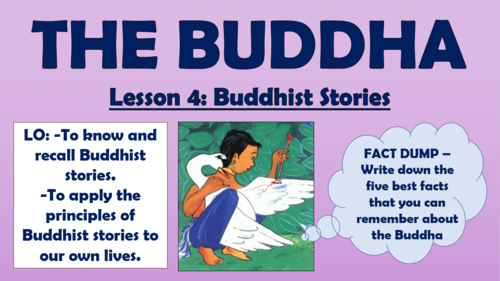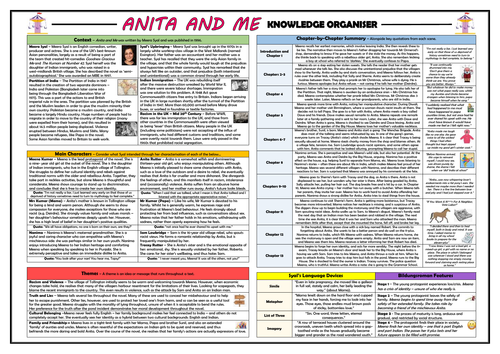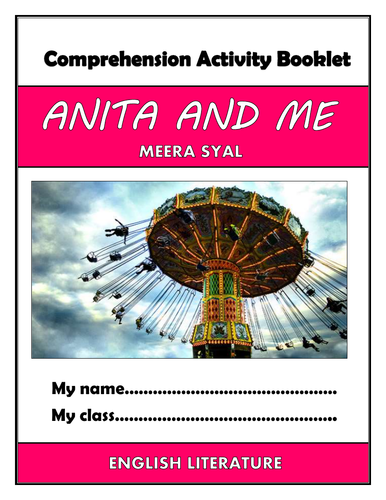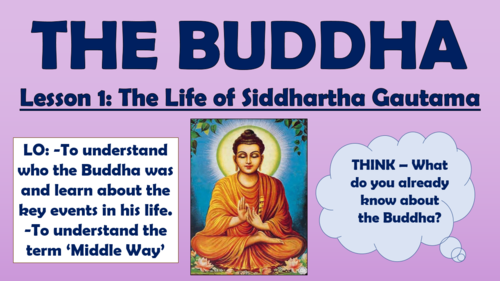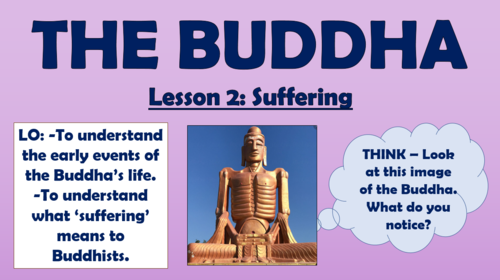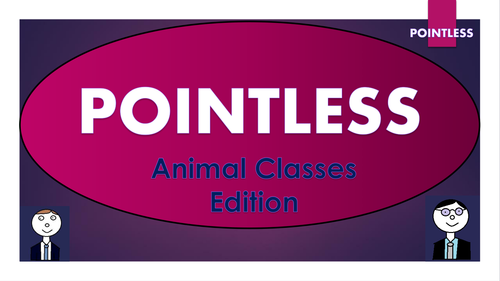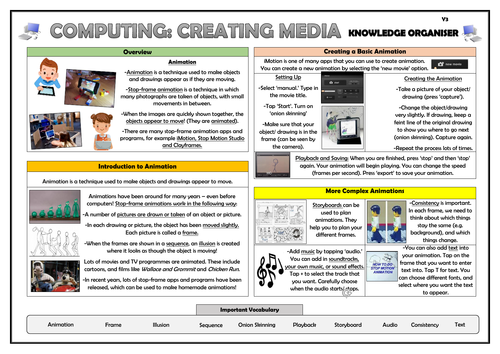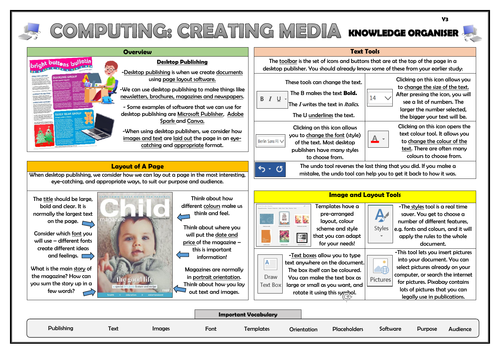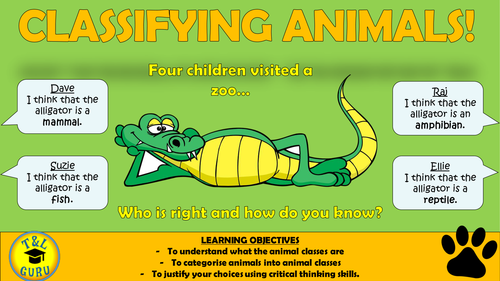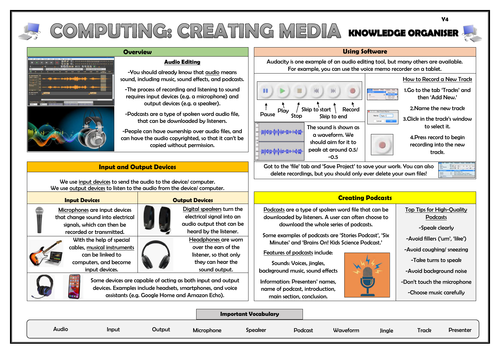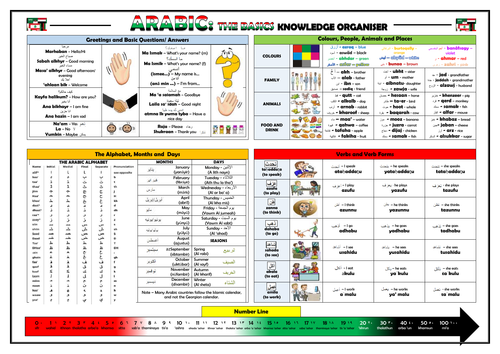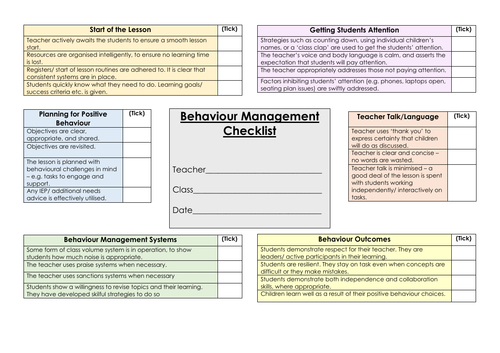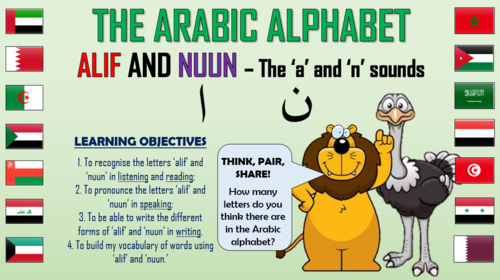
3k+Uploads
1952k+Views
2270k+Downloads
Whole school

Locational Knowledge - East Anglia - Knowledge Organiser!
This clear, detailed and visually-appealing resource offers a complete reference point for students revising knowledge relating to East Anglia, as a part of locational knowledge/local study in geography. It contains comprehensive sections on:
Overview and map;
Population and area figures;
Important places;
Longest rivers;
Highest hills;
Human Geography Features;
Physical Geography Features.
The resource is designed to be printed onto A3, and is provided as both a PDF and a Word version (so that you can edit if you want to). All images used are licensed for commercial use and are cited on a separate document (included). The resource is most suitable for students in KS2 or lower KS3.

The Buddha - Buddhist Stories!
In this engaging lesson, students gain a deeper understanding of Buddhist stories that influence the ways in which Buddhists treat animals.
The learning is guided by a clear and colourful PowerPoint presentation, which guides students through the following step-by-step journey:
-Watching video clips telling the story of Siddhartha and the Swan and The Monkey King (link provided);
-Answering comprehension questions to demonstrate understanding of the stories;
-Understanding the key messages that these stories give Buddhists to take on in their lives;
-Thinking about how they can apply these principles to their own lives;
-Creating a poster for Buddhists about treatment of animals, using their learning from across the lesson;
-Completing a plenary to assess their understanding.
In the past, I have used this lesson with children from lower Key Stage 2 - the key learning is aligned with curriculum expectations for RE, and also the content prescribed by most diocese regions. All images are licensed for commercial use.

Anita and Me - Knowledge Organiser/ Revision Mat!
This detailed and visually-appealing resource offers a complete reference point for students learning or revising Meera Syal’s ‘Anita and Me.’ It contains comprehensive sections on:
Context;
Chapter by Chapter Summary (with quotes);
Main Characters;
Themes;
Syal’s Language Devices;
Features of Form.
Key words and ideas are underlined for easy reference. The resource is designed to be printed onto A3, and is provided as both a PDF and a Word version (so that you can edit if you want to). All images used are licensed for commercial use and are cited on a separate document (included).

Anita and Me - Comprehension Activities Booklet!
This resource booklet contains a wide range of age-appropriate, engaging, and meaningful comprehension activities for use throughout the reading of Meera Syal’s ‘Anita and Me.’ Teachers have found them particularly useful in exam revision, comprehension tasks, or guided reading sessions.
They are perfect for aiding the progress of students towards meeting the KS4 expectations within the National Curriculum framework - this makes the tasks suitable for all examining bodies. Students have found these resources extremely engaging, and for teachers there is explicit information within each task regarding which comprehension strands the task is designed to demonstrate.
They also relate to key extracts, characters, and themes from the story, ensuring that students gain a deep understanding of the text.
Activities within the booklet include:
'Context: 1970s Britain - to aid students with ‘Drawing on knowledge of the purpose, audience and context of the writing, including its social, historical and cultural context and the literary tradition to which it belongs, to inform evaluation;’
‘Syal’s Description’ - to aid students with ‘Analysing a writer’s choice of vocabulary, form, grammatical and structural features, and evaluating their effectiveness and impact;’
‘Nanima’ and ‘Anita’ - to aid students with ‘Seeking evidence in the text to support a point of view, including justifying inferences with evidence;’
‘Editing the Text’ - to aid students with ‘Making an informed personal response, recognising that other responses to a text are possible and evaluating these.’
Plus many, many more activities (the booklet is around 30 pages in length!) I’ve also added it as a PDF in case the formatting differs on your computer.
All images are licensed for commercial use, and are cited on a separate document (included).

The Buddha - The Life of Siddhartha Gautama!
In this engaging lesson, students are introduced to who Siddhartha Gautama was, and learn how he became the Buddha. They also begin to discuss the ‘Middle Way’, and consider how these ideas can be applied to modern life.
The learning is guided by a clear and colourful PowerPoint presentation, which guides students through the following step-by-step journey:
-Knowledge harvesting - gauging what children already know about the Buddha;
-Watching a short video (hyperlinked) about the life of Siddhartha Gautama;
-Explaining the key events in his life, using a storyboard template;
-Discussing what is meant by the ‘Middle Way’, and how this helped Gautama to find enlightenment;
-Thinking about how they can apply the ideas of the ‘Middle Way’ to their own lives;
-Considering a deeper thinking extension question;
-Completing a plenary to assess their understanding.
This resource pack contains a comprehensive Powerpoint, alongside an eye-catching worksheet.
In the past, I have used this lesson with children from across Key Stage 2 - the key learning is aligned with curriculum expectations for RE, and also the content prescribed by most diocese regions. All images are licensed for commercial use.

The Buddha - Suffering!
In this engaging lesson, students gain a deeper understanding of the early part of the Buddha’s life. They also consider the idea of suffering, and contemplate how Siddhartha Gautama aimed to find an end to suffering.
The learning is guided by a clear and colourful PowerPoint presentation, which guides students through the following step-by-step journey:
-Inferring - looking at a picture of the Buddha and reading between the lines to understand what it shows us;
-Considering the concept of suffering by answering key questions;
-Reading and discussing the key events of Siddhartha Gautama’s early life;
-Writing two diary entries from the perspective of Siddhartha Gautama - before and after he witnesses suffering - using a helpful diary success criteria sheet;
-Thinking about how they can apply the idea of the suffering to their own lives;
-Considering a deeper thinking extension question;
-Completing a plenary to assess their understanding.
This resource pack contains a comprehensive Powerpoint, alongside an eye-catching worksheet.
In the past, I have used this lesson with children from across Key Stage 2 - the key learning is aligned with curriculum expectations for RE, and also the content prescribed by most diocese regions. All images are licensed for commercial use.

Animal Classes - Pointless Game!
Based on the popular game show 'Pointless', this resource is perfect for use as a whole lesson resource, enrichment option, or revision tool. Editable, so that you can change to any other topic or change questions. (I've also added a blank template so that you can make your own games from scratch). Containing almost 30 slides of sound clips, engaging visuals, and suitably challenging questions, this resource is effective at both promoting engagement and enhancing learning.
There are several full rounds of questions to build or revisit knowledge of different animal classes and types - an important KS1 Science topic within the National Curriculum.
Round 1. Reptiles
Round 2. Animal Classes
Round 3. Anagrams Round
Round 4. Birds
The nature of this game ensures that the resource can challenge students of all levels.

Year 4 Computing - Creating Media - Editing Photos - Knowledge Organiser!
This clear, detailed and visually-appealing resource offers a complete reference point for Year 4 children, teachers and parents covering knowledge relating to ‘Creating Media’ as a part of their computing learning.
The organiser has a particular focus on using photo editing software. It contains comprehensive sections on:
-Overview;
-Editing Techniques;
-Using Software;
-Considerations of Edited Photos;
-Key Vocabulary
The content is fully aligned with the age-related expectations for Year 4 children in computing. The resource is designed to be printed onto A3, and is provided as both a PDF and a Word version (so that you can edit if you want to). All images used are licensed for commercial use and are cited on a separate document (included).

Year 3 Computing - Creating Media - Animations - Knowledge Organiser!
This clear, detailed and visually-appealing resource offers a complete reference point for Year 3 children, teachers and parents covering knowledge relating to ‘Creating Media’ as a part of their computing learning.
The organiser has a particular focus on using stop-frame animation programs and apps. It contains comprehensive sections on:
-Overview;
-Introduction to Animations;
-Creating Basic Animations;
-More Complex Animations;
-Key Vocabulary
The content is fully aligned with the age-related expectations for Year 3 children in computing. The resource is designed to be printed onto A3, and is provided as both a PDF and a Word version (so that you can edit if you want to). All images used are licensed for commercial use and are cited on a separate document (included).

Year 3 Computing - Creating Media - Desktop Publishing - Knowledge Organiser!
This clear, detailed and visually-appealing resource offers a complete reference point for Year 3 children, teachers and parents covering knowledge relating to ‘Creating Media’ as a part of their computing learning.
The organiser has a particular focus on using desktop publishing programs. It contains comprehensive sections on:
-Overview;
-Layout of a Page;
-Text Tools;
-Image and Layout Tools;
-Key Vocabulary
The content is fully aligned with the age-related expectations for Year 3 children in computing. The resource is designed to be printed onto A3, and is provided as both a PDF and a Word version (so that you can edit if you want to). All images used are licensed for commercial use and are cited on a separate document (included).

Classifying Animals!
This detailed and engaging lesson enables students to gain an understanding of what animal classes are, and which animals belong to the different categories. Furthermore, they learn to categorise animals themselves, using scientific knowledge of the features of each animal class. Students justify their choices using critical thinking skills.
Students learn through a number of fun and interactive tasks, which enable them to:
- Define each animal class and understand its features;
- Exemplify each animal class, justifying their choices;
- Use research and investigative skills to categorise animals for whom the class is not immediately obvious;
- Evaluate the learning and understanding of themselves and their peers.
The resources include:
-Visually engaging and comprehensive whole-lesson presentation;
-Resources for the card-sorting activity;
-A categorising and justifying worksheet (and answer sheet for teacher);
-An investigation log;
-Step-by-step lesson plan.
All images are licensed for commercial use, and are cited on the final page of the slide.

Spring and Fall: To A Young Child - Comprehension Activities Booklet!
This 16-page resource booklet contains a wide range of challenging and engaging comprehension activities for use throughout the reading of Garard Manley Hopkins’ poem ‘Spring and Fall: To A Young Child.’ Teachers have found the activities particularly useful throughout teaching, or for exam revision or guided reading sessions. They are perfect for aiding the progress of students towards meeting the key English Literature assessment objectives - suitable for all examining bodies. Students have found these resources extremely engaging, and it is clearly highlighted within each task regarding which assessment strands the task is designed to demonstrate.
It is provided in both Word (to allow for easy editing) and PDF (to ensure for consistency of formatting between computers).
Activities within the booklet include (amongst many others):
‘Analysing Context’ - helping students to ‘Show understanding of the relationships between texts and the contexts in which they were written.’
‘Analysing Subject Matter, Language and Structure’ - to help students to ‘Analyse the language, form and structure used by a writer to create meanings and effects, using relevant subject terminology where appropriate.’
‘Diary Entry’ - to help students to ‘Use a range of vocabulary and sentence structures for clarity, purpose and effect, with accurate spelling and punctuation. Make an informed personal response, recognising that other responses to a text are possible and evaluating these.’
‘The Speaker’ - to help students to ‘Read, understand and respond to texts. Students should be able to: maintain a critical style and develop an informed personal response use textual references, including quotations, to support and illustrate interpretations.’

Venus's Flytraps - Yusuf Komunyakaa - Comprehension Activities Booklet!
This 16-page resource booklet contains a wide range of challenging and engaging comprehension activities for use throughout the reading of Yusuf Komunyakaa’s poem ‘Venus’s Flytraps.’ Teachers have found the activities particularly useful throughout teaching, or for exam revision or guided reading sessions. They are perfect for aiding the progress of students towards meeting the key English Literature assessment objectives - suitable for all examining bodies. Students have found these resources extremely engaging, and it is clearly highlighted within each task regarding which assessment strands the task is designed to demonstrate.
It is provided in both Word (to allow for easy editing) and PDF (to ensure for consistency of formatting between computers).
Activities within the booklet include (amongst many others):
‘Analysing Context’ - helping students to ‘Show understanding of the relationships between texts and the contexts in which they were written.’
‘Analysing Subject Matter, Language and Structure’ - to help students to ‘Analyse the language, form and structure used by a writer to create meanings and effects, using relevant subject terminology where appropriate.’
‘Diary Entry’ - to help students to ‘Use a range of vocabulary and sentence structures for clarity, purpose and effect, with accurate spelling and punctuation. Make an informed personal response, recognising that other responses to a text are possible and evaluating these.’
‘The Speaker’ - to help students to ‘Read, understand and respond to texts. Students should be able to: maintain a critical style and develop an informed personal response use textual references, including quotations, to support and illustrate interpretations.’

You're - Sylvia Plath - Comprehension Activities Booklet!
This 16-page resource booklet contains a wide range of challenging and engaging comprehension activities for use throughout the reading of Sylvia Plath’s poem ‘You’re.’ Teachers have found the activities particularly useful throughout teaching, or for exam revision or guided reading sessions. They are perfect for aiding the progress of students towards meeting the key English Literature assessment objectives - suitable for all examining bodies. Students have found these resources extremely engaging, and it is clearly highlighted within each task regarding which assessment strands the task is designed to demonstrate.
It is provided in both Word (to allow for easy editing) and PDF (to ensure for consistency of formatting between computers).
Activities within the booklet include (amongst many others):
‘Analysing Context’ - helping students to ‘Show understanding of the relationships between texts and the contexts in which they were written.’
‘Analysing Subject Matter, Language and Structure’ - to help students to ‘Analyse the language, form and structure used by a writer to create meanings and effects, using relevant subject terminology where appropriate.’
‘Diary Entry’ - to help students to ‘Use a range of vocabulary and sentence structures for clarity, purpose and effect, with accurate spelling and punctuation. Make an informed personal response, recognising that other responses to a text are possible and evaluating these.’
‘The Speaker’ - to help students to ‘Read, understand and respond to texts. Students should be able to: maintain a critical style and develop an informed personal response use textual references, including quotations, to support and illustrate interpretations.’

Year 4 Computing - Creating Media - Audio Editing - Knowledge Organiser!
This clear, detailed and visually-appealing resource offers a complete reference point for Year 4 children, teachers and parents covering knowledge relating to ‘Creating Media’ as a part of their computing learning.
The organiser has a particular focus on using audio editing tools. It contains comprehensive sections on:
-Overview;
-Input and Output Devices;
-Using Software;
-Creating Podcasts;
-Key Vocabulary
The content is fully aligned with the age-related expectations for Year 4 children in computing. The resource is designed to be printed onto A3, and is provided as both a PDF and a Word version (so that you can edit if you want to). All images used are licensed for commercial use and are cited on a separate document (included).

The Big Enterprise Project!
This engaging investigation activity allows students to use develop their innovation, creativity and collaboration skills to control the direction of their enterprise project.
The resource set guides students through the entire project, from conception to evaluation, and includes resources/ guidance for the following activities:
-Deciding upon different roles within their groups, in order to carry out multiple tasks effectively;
-Designing a company name and appropriate logo and slogan;
-Researching their product area, including competitors and USPs;
-Conducting market research;
-Budgeting;
-Detailed product design;
-Packaging design;
-Creating instructions for users;
-Formulating and presenting a persuasive pitch;
-Surveying the target audience for their feedback;
-Self-evaluating strengths and areas for development.
A comprehensive PowerPoint presentation guides students through the project.
There are at least a week’s worth of resources in here, enabling students to fully immerse themselves in the project. I orignally have used this with KS2 and KS3 students, but they could reasonably be adapted for students in KS4.
All images have been cited at the end of the PowerPoint presentation and are licensed for commercial use.

Arabic - The Basics - Knowledge Organiser/ Revision Mat!
This clear, detailed and visually-appealing resource offers a complete reference point for students learning or revising the basics of Arabic as an additional language. It contains comprehensive sections on:
Greetings;
Basic Questions/ Answers;
The Alphabet;
Months/ Days/ Seasons;
Numbers;
Colours;
Family;
Animals;
Foods;
Verbs and Verb Forms.
The resource is designed to be printed onto A3, and is provided as both a PDF and a Word version (so that you can edit if you want to). All images used are licensed for commercial use and are cited on a separate document (included).

Learning Walk/ Teacher Development Checklists!
These comprehensive checklists have been created to aid school leaders when performing learning walks with a particular focus e.g. questioning, differentiation, etc. Clearly structured and organised, they present a central idea surrounded by a breakdown of a number of its key components.
For the user, this layout provides a simple reference list of each of the desirable skills, categorised appropriately. The checklists also provide an alternative to regular feedback methods, which often focus too heavily on the standard or ‘judgement’, as opposed to being a developmental tool.
Alternatively, these are really handy for teachers looking to develop their practice in the key teaching areas listed below. Included in the pack are checklists for:
-Questioning
-Differentiation
-Utilising Resources (including support staff)
-Engagement
-Building Literacy Skills
-Planning and Expectations
-Building Learning Power
-A blank template for you to design your own based upon your own focus
Note: The checklists are provided as both PDFs (for formatting stability) and Word (so that you can edit them easily) - the Word versions are in the zipfile.
Many Thanks

The Arabic Alphabet - Alif and Nuun - The 'a' and 'n' sounds!
This Powerpoint and accompanying flash card activity has been designed to guide beginner Arabic students towards learning how to recognise, pronounce, read and write the letters ‘alif’ and ‘nuun’ from the Arabic alphabet. In addition to learning how the form of the letters changes depending upon their position in words, students also build their Arabic vocabulary through recognising and reciting words containing alif and nuun within them. Students also learn how the hamza affects the pronunciation of alif.
Combined, this learning furnishes the students with all of the infomation that they need in order to be able to speak and write ‘ana’ (‘I’ or ‘I am’ in Arabic), vital to a wide range of sentences.
Included in this pack is:
Comprehensive and colourful step-by-step PowerPoint;
Bronze silver and gold vocaulary cards (in order to differentiate the flashcard challenge);
Worksheets are provided in both PDF (to maintain formatting) and Word (for easy editing). All images are cited on the final slide of the presentation.

Out of the Blue Comprehension Activities Booklet!
This 16-page resource booklet contains a wide range of age-appropriate, engaging, and meaningful comprehension activities for use throughout the reading of Simon Armitage’s 9/11 poem ‘Out of the Blue.’ Teachers have found them particularly useful throughout teaching, or for exam revision or guided reading sessions. They are perfect for aiding the progress of students towards meeting the key English Literature assessment objectives - suitable for all examining bodies. Students have found these resources extremely engaging, and it is clearly highlighted within each task regarding which assessment strands the task is designed to demonstrate.
Activities within the booklet include:
‘Analysing Context’ - helping students to ‘Show understanding of the relationships between texts and the contexts in which they were written.’
‘Analysing Subject Matter, Language and Structure’ - to help students to ‘Analyse the language, form and structure used by a writer to create meanings and effects, using relevant subject terminology where appropriate.’
‘Diary Entry’ - to help students to ‘Use a range of vocabulary and sentence structures for clarity, purpose and effect, with accurate spelling and punctuation. Make an informed personal response, recognising that other responses to a text are possible and evaluating these.
‘The Speaker’ - to help students to ‘Read, understand and respond to texts. Students should be able to: maintain a critical style and develop an informed personal response use textual references, including quotations, to support and illustrate interpretations.’
Plus many, many more activities! I’ve also added it as a PDF in case the formatting differs on your computer.


